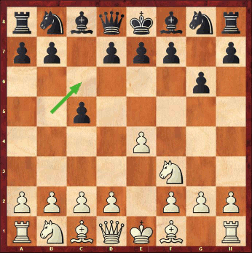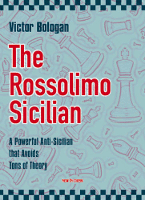Master vs. Amateur
By Davide Nastasio
A Repertoire Against the Sicilian, by Lorin D’Costa and Nick Murphy, ChessBase Fritz Trainer, Video running time 6 hours, $34.95 (ChessCafe Price $29.87)
In this “Master & Amateur” DVD, International Master Lorin D’Costa and chess software expert Nick Murphy outline the various “anti-Sicilians.” As with many 1.e4 players, I have struggled against the Sicilian for years. Using the Smith-Morra works well up to a certain point (and there are illustrious names among the victims of the gambit), next I turned to the Alapin, adored by GM Sveshnikov, and then I finally approached the idea of playing sharper lines. When this DVD was published I jumped at the idea of having a good repertoire against the Sicilian. For one, IM D’Costa is a real connoisseur of the Sicilian having written The Sicilian Scheveningen: Move by Move.
In fact, this DVD resembles the Move by Move book series. The format of this DVD is particularly interesting. Here we find a more human approach. As opposed to having an IM or GM explain endless lines and counter-lines, IM D’costa is partnered with Nick Murphy, who happens to be one of us! He is an amateur with a passion for chess, who by profession is an actor. ChessBase bills him as a chess software expert because of the videos he provides for chessbase.com about how to get the most from ChessBase software.
So Murphy’s questions in the video-clips are those each of us would like to pose to an IM or GM when they explain the openings or aspects about the game in general. I found this approach quite pleasing, because some of the questions posed by Murphy were the ones I would have asked. It also highlights the strength of IM D’Costa who sees combinations instantly, while it take Murphy and myself longer. I was happy to receive feedback in this sense because it made me think that my tactic training is insufficient. (I do about 15,000 positions a year.)
D’Costa has created two databases on the DVD: one based on the 24 games in the videos, and a second database based on 68 deeply annotated games. In the videos he comments up to around move 16 to 24.
For those, who like me love to make their own databases, the first thing to do is check the ECO keys given in the databases. Thanks to my Chessbase Mega Database 2015 I created four databases: one with all the games in B51-B52, another with B30-B31, and the last two with B40 and B27. The one on B51-B52 contains more than 32,000 games! And 40,000 games for B30! Given this fact, I agree with GM Har-Zvi who suggested that the ECO codes be revised to be more specific within certain lines. (The ECO codes were revised, see the NIC Key system-ed.) Thus, I changed the search filter and made a database for each ECO code. I did this in order to do watch 100-200 games at a time very quickly to absorb the patterns. Once I do that then I watch the videos, and the puzzle pieces fall right into place because thanks to the clear explanations from IM D’Costa.
The filter key is quite handy, sometimes one can choose to see the all games with less than 25 moves, and that can be a real fun hour. Or you can ask the program to select only the games between players rated higher than, say, 2650. Or you can watch the games from a certain historical period to have an idea of how the opening evolved. Note that this can be done anywhere. This is one of the great things about chess: it can be practiced everywhere, at any hour of the day! With my tablet and ChessBase Reader installed I’m ready to go, be it during a lunch break at work or whenever. In fact, I keep two tablets. I learned to have a backup when my one and only tablet broke before the World Open.
The DVD covers all the main moves Black can play:

I will not go into detail about each video clip, but I will sketch the main lines. The content is divided into four chapters (which are misnumbered on the text file page).
Chapter 1 covers 1.e4 c5 2.Nf3 d6 3.Bb5+:

Eight videos by IM D’Costa explain some key games, while Mr. Murphy is drilled on certain positions or he poses some interesting questions. This partnership is quite instructive, because in some cases D’Costa will ask Murphy how to attack a pawn, and Murphy doesn’t get it right away. But D’Costa patiently shows him how to find the right move. In the first video D’Costa explains the ideas behind the Maroczy Bind for White, what Black should do to fight against it, and then what White needs to do to make the pawn structure more stable. This first clip alone is worth the price of the DVD for the ideas it contains.
In Chapter 2, IM D’Costa tries to bypass much of the theory in the Open Sicilian by using the Rossolimo Variation: 3.Bb5 against 2…Nc6.

By the way, for the enjoyment of those who love history, here is the first game played by Rossolimo with this line:
Rossolimo,Nicolas – Kottnauer,Cenek [B30]
Bad Gastein (10), 1948
1.e4 c5 2.Nf3 Nc6 3.Bb5 e6 4.0-0 Nf6 5.Re1 d5 6.exd5 Nxd5 7.Ne5 Qc7 8.Qf3 Bd6 9.Nxc6 bxc6?? [9…0-0?] 10.Qxd5 Bxh2+ 11.Kh1 0-0 12.Qh5 1-0
The Rossolimo has been covered by other GMs in the ChessBase system, so an interested student can reinforce the most important ideas by viewing these other products.
Chapter 3 deals with 1.e4 c5 2.Nf3 e6. IM D’Costa clearly shows why the Rossolimo is not the correct answer to 2…e6:

And instead proposes 1.e4 c5 2.Nf3 e6 3.b3, analyzing four games and explaining the main plans Black can adopt, and how White neutralizes them.

Chapter 4 offers two games based on 1.e4 c5 2.Nf3 g6 3.d4. D’Costa says Black is trying to sidestep the Rossolimo with an Accelerated Dragon:

Here D’Costa recommends 1.e4 c5 2.Nf3 g6 3.d4 cxd4 4.Qxd4

He then goes on to show a sideline which avoids to learn lots of theory.
The DVD ends with a set of ten test positions.
IM D’Costa is a terrific teacher and I like the way he concisely explains the ideas with a calm assuring tone. Nick Murphy’s participation makes it even more like a real lesson and demonstrates what it is like to have a lesson with an IM or GM.
My assessment of this product:
![]()
Order A Repertoire Against the Sicilian
by Lorin D’Costa and Nick Murphy
A PDF file of this week’s review, along with all previous reviews, is available in the ChessCafe.com Archives.
© 2015 ChessEdu.org. All Rights Reserved.




Leave a Reply